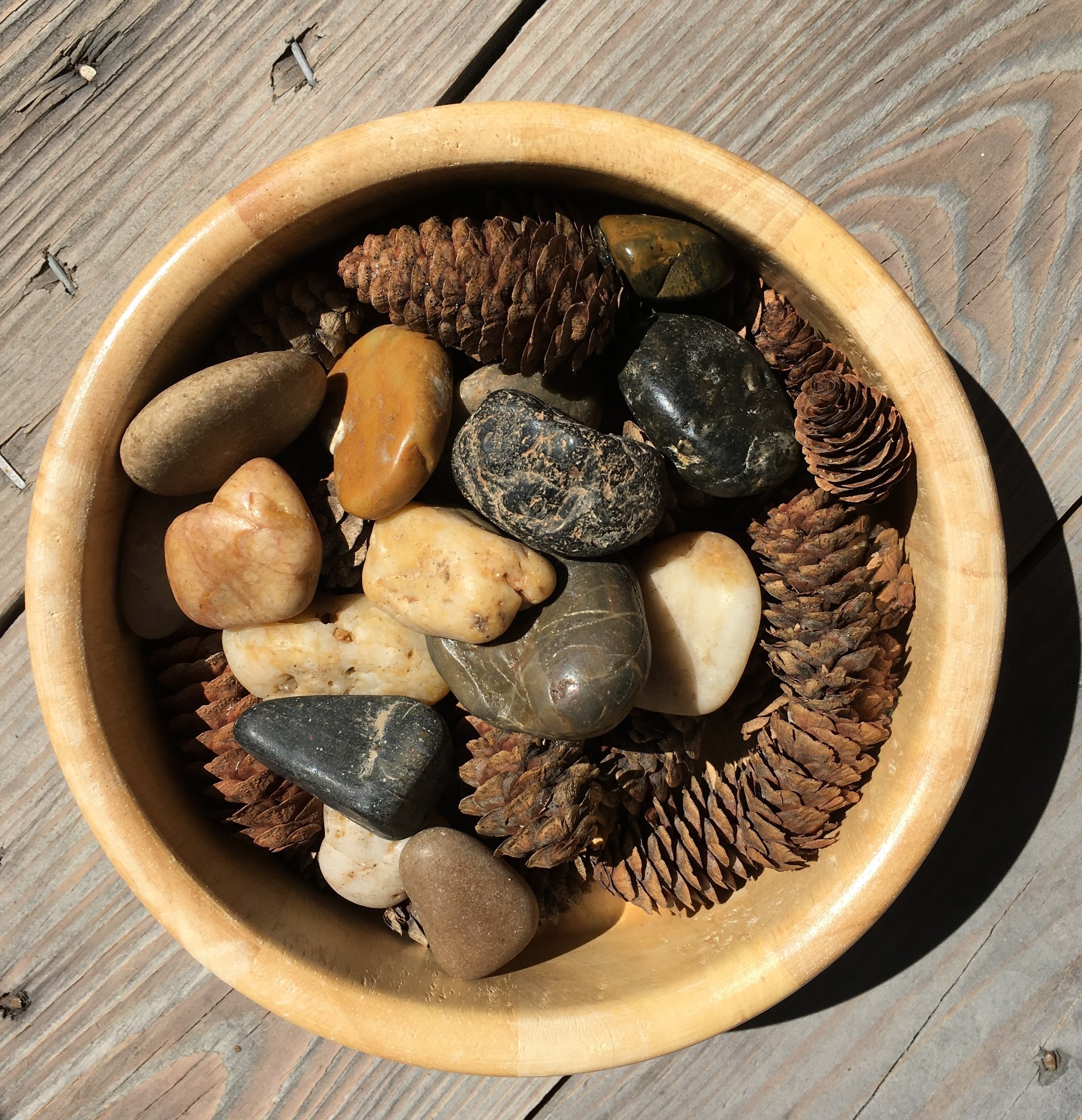“Sets can be compared and ordered”
-Erikson Institute’s Early Math Collaborative
My preschool students loved picking flowers from the weedy areas around our playground. Dandelions, Wild Violets and Clover. One afternoon I suggested putting the flowers into small jars to keep in our classroom. I held out two bunches, Dandelions in one hand and Clover in the other. Not missing a step, a four year old girl snatched the Dandelions. “Why did you choose those?” I asked, to which she quickly responded, “There’s more!”
“Activities that ask children to identify “which is more” with small quantities will help them organize their thinking about magnitude or relative amount.” - Erikson Institute’s Early Math Collaborative (2014)
After playing with sorting and creating sets, compare the sets to see how they differ. One example is to look at two sets and see which has more and which has less.
Playful Invitation
1. Prepare: Gather rocks and pinecones.
Observe the child throughout the interaction. Use the Invitation to Play Documentation Tool to collect data.
2. Invite: Place five rocks and three pinecones in front of the child and ask: Will you sort these into groups? OR Put things that are the same into piles.
3. Play:
If the child sorts using an attribute (type, color, size) then keep going. If not, return to creating sets.
Ask: Which group has more? less? OR Are there more ____ or more ____?
How do you know?
Model thinking: This pile is bigger, I think it has more. Let’s count...1, 2, 3, 4, 5, and only 1, 2, 3 in this group. There are more in this group and less in that group! Really stress the math language.
Continue using different combinations of items (3 pinecones & 5 rocks, 1 pinecone & 4 rocks, 3 rocks & 3 pinecones, etc.) Vary the number of each item, compare, use the language "more" and "less."
4. Reflect and Assess: Did the child identify the group with more? less? Does the child estimate simply by looking or do he/she count each item individually?
Ready: The child is ready if he/she can sort items into sets based on an attribute. The child also must have a basic understanding of more and less.
Ready to move on: The child knows which set has more and which has less with ease when using a small number of items.
Extend: Ask how many are in each group and talk about how many more. Or match one item from each group in a line. Once all matches are made talk about the remaining objects. How many more were in that particular group?
Also, try using three different materials (rocks, pinecones, acorns) sort and then compare. Put the piles in order of most to least.
*Remember- start with only a small number of items- then gradually increase. Children need to be successful working with numbers under five before advancing to higher amounts.
Math Language
Attribute- characteristic of an item. Examples include color, shape, texture, size, type, number, etc.
Set- items that are grouped together in a meaningful way.
Sort- organize items based on characteristic/attribute.
Resources
Development of Research in Early Math Education (2017)*
Ngyuyen, H.N., Laski, E.V., Thomson, D.L., Bronson, M.B., & Casey, B.M. (2017)*
*full citation can be found on the Research page







